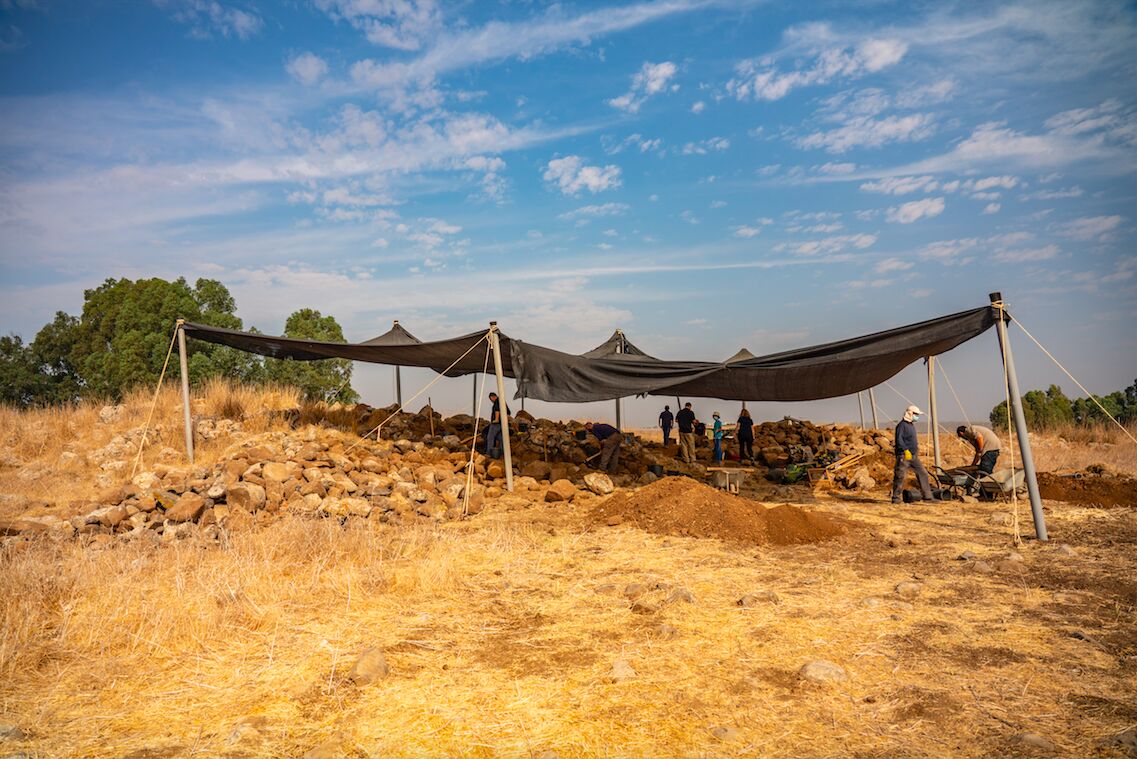Excavations in the far north of Israel have uncovered an impressive fortification dating to the time of King David (11th to 10th centuries b.c.e.). The fortress, discovered near the Golan Heights town of Hispin, is believed to have been originally built as part of the kingdom of Geshur, which controlled this area and was closely tied to King David.
The fortress encompassed a strategic hilltop location overlooking the El-Al canyon, and sported 1.5-meter-thick walls built of large basalt boulders. One of the boulders near the entrance to the fortress bore an engraving of two horned gods with outstretched arms.
A near-identical discovery was made last year at Tel Et-Tell (Bethsaida). Tel Et-Tell is believed to have been the capital of the kingdom of Geshur. A number of impressive finds have been found at the site, including a massive 10th-century b.c.e. gatehouse, and 6-meter-thick walls. The Hispin gods were probably a local copy of the royal Geshurite-Canaanite moon-god cult centered at this capital.
The Bible details relations between King David and the Geshurite kingdom. 1 Samuel 27:8 reveals that David and his men “made a raid upon the Geshurites” during the days of King Saul. Later on, David took “Maacah the daughter of Talmai king of Geshur” as his wife (2 Samuel 3:3). It was from this union that his son Absalom and daughter Tamar were born.
After Tamar was raped by her half-brother Amnon, Absalom killed Amnon and fled to the land of Geshur, where he stayed for three years in order to escape the fallout of his actions (2 Samuel 13). Perhaps he even spent time at this more distant Geshurite fortress.

During his reign, David (and later Solomon) exerted control over the Geshurite kingdom and even further north (e.g. 1 Chronicles 18; 1 Kings 5:1). The returning Absalom would eventually be killed during his attempt to overthrow his father, but his daughter Maacah (named after his Geshurite mother) would go on to become the “favorite” wife of Rehoboam and produce the next heir to the throne of Judah: King Abijah (1 Kings 15:1-2). Interestingly, she would eventually be deposed by her grandson for the idol worship that she brought into Judah—likely the worship of this very same Geshurite moon-god (1 Kings 15:13).
The kingdom of Geshur (including the Hispin fortress) would thus have been well familiar with the key individuals of this biblical account—and based on the dating, the Hispin fortress may well have been constructed at the order of Talmai himself.
A number of other ancient Geshurite city-sites are known, including Tel Hadar, Tel En Gev and Tel Sorag—but the site at Hispin is unique in its northern location on the Golan. Congratulations to the Israel Antiquities Authority-led excavation team—much of which was made up of local “Golanite” residents and youth—for their impressive discovery!

